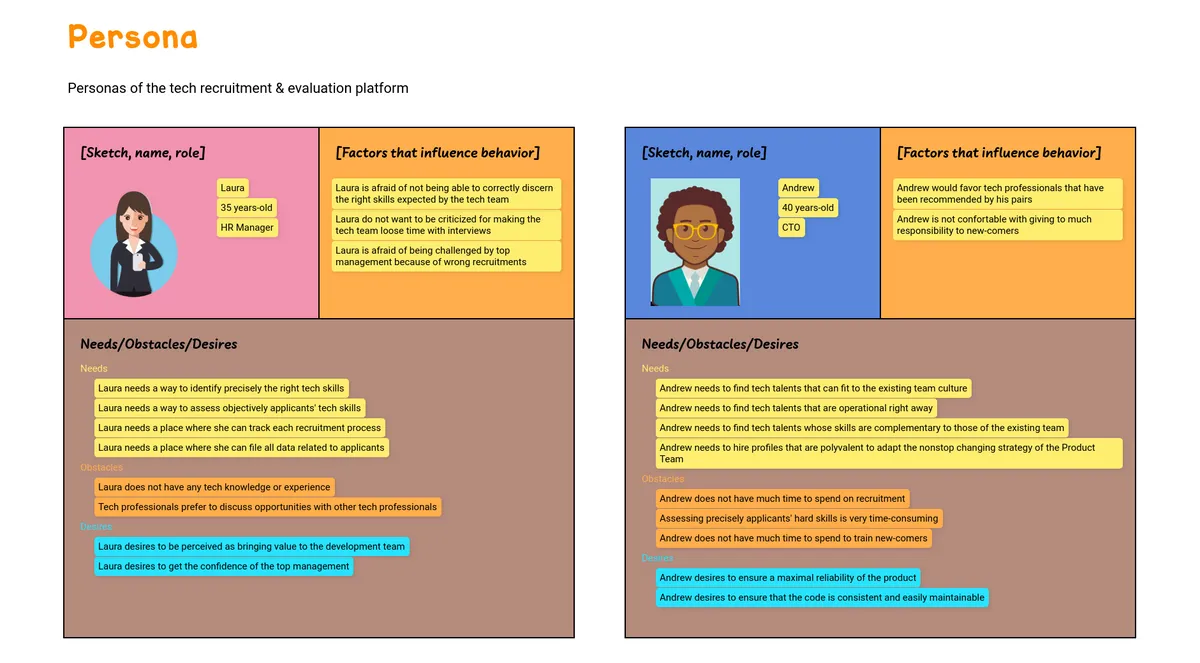What is a Persona?
User personas are an essential element of a business’s customer segmentation strategy. They are used to describe, understand, and anticipate how defined groups of target customers (or users) behave, think, and transact as well as what they hope to accomplish (and why) whenever they engage with a brand. More often than not, they are the direct output of the behavioral and demographic insights uncovered during customer research.
User personas have been widely used in the design industry because they humanize target audiences in a way that helps development teams feel more empathetic about creating user experiences that help customers achieve their wants, needs, and goals. Similarly, user personas help avoid designers and developers from projecting their own values, perceptions, motivations, or assumptions onto a product’s design instead of staying focused on delivering product experiences aligned to user expectations.
As is the case with all models, user personas must also be intrinsically linked to real-world observations—from interviews, surveys, and focus groups with actual and/or potential users. Other relevant market research data or interviews with subject-matter experts can be used to enrich the process for developing user personas as well.
Understanding users goals and emotions
Building user personas is more about understanding users’ motivations, behaviors, and emotions than understanding their specific demographics or the tasks they seek to accomplish. This is one of the reasons why Don Norman introduced three different levels of cognitive and emotional processing in his book Emotional Design:
- Visceral processing refers to a more intuitive kind of decision-making that occurs when our senses are immediately stimulated.
- Behavioral processing characterizes our everyday or “mechanical” behaviors, based on our most basic or daily interactions with our surrounding environment.
- Reflective processing engages conscious consideration, forcing us to tap into past experiences to influence future decision-making. As such, it can either enhance or inhibit behavioral processing and, over time, provide the cues for associating different kinds of meaning or value with various artifacts.

The three types of user goals
Taking this theory one step further, the authors of About Face (aka, the official bible for interaction design) linked these levels of cognitive and emotional processing to user goals:
- Experience goals (visceral processing): How the user wants to feel.
- End goals (behavioral processing): What the user wants to do.
- Life goals (reflective processing): Who the user wants to be.
How to build a User Persona?
Jeff Gothelf and Josh Seiden propose a simple schematic for documenting the nuances of specific user personas in their book Lean UX:
- The upper-left quadrant gives the persona a fictional (yet human) identity with a photo or a sketch, a name, and a role.
- The upper-right quadrant hones in on any information that may predict specific user actions, including demographic data, behavior patterns, and other user attributes.
- The bottom half captures a persona’s high-level wants, needs, and desires as well as the current obstacles those users may face (and need to overcome).

Test User Personas by putting them into context
Before starting a brainstorm about what product features can address the wants, needs, and expectations of your defined user personas, consider putting them into context first to assess and identify opportunities. In Crossing the Chasm, Geoffrey A. Moore suggests creating two scenarios that seek to paint a picture of what a “day in the life” of your user personas looks like before and after introducing your product or service.
The “before” scenario must capture five core elements:
- Scene or Situation: This is the moment of frustration. You need to think about what is happening or what kind of action the user is attempting to follow through on.
- Desired Outcome: What does the user want to accomplish? Why is this important?
- Attempted Approach: How does the user do this before the product is introduced?
- Interfering Factors: What didn’t work? How and why does it go wrong?
- Economic Consequences: What is the (economic) impact of users not being able to accomplish the task(s) they’ve set their sights on?
The “after” scenario follows the same pattern, now with the new product or service in place:
- New Approach: How does the user now go about accomplishing the task?
- Enabling Factors: What now makes it possible for the user to become unstuck?
- Economic Rewards: What are the costs avoided or financial benefits gained?
